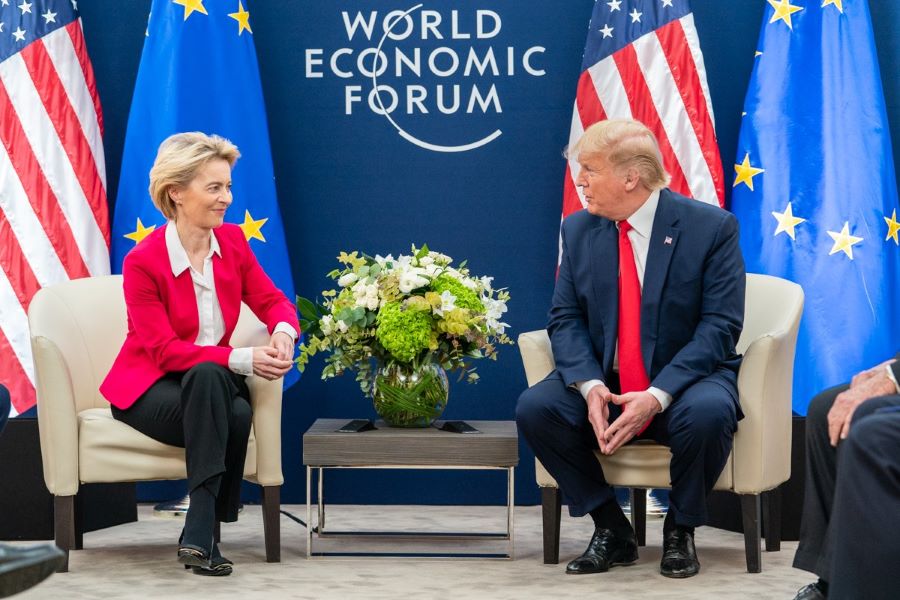
- Industry news
Industry news
- Category news
Category news
- Reports
- Key trends
- Multimedia
- Journal
- Events
- Suppliers
- Home
- Industry news
Industry news
- Category news
Category news
- Reports
- Key trends
- Multimedia
- Events
- Suppliers
US reaches tariff deal with EU as alcohol sector pleads for exemptions

The EU has reached a tariff agreement with the US after months of negotiations with the Trump administration. The deal will impose 15% levies on most imports from the bloc. This avoids a trade war and is in exchange for massive European investments (US$750 billion) in US weapons and energy infrastructure.
The new rates replace the previous tariffs of approximately 1.5%, marking a substantial increase in cost for exporters. Key categories affected include wine, cheese, olive oil, spirits, beer, and processed foods.
In 2024, EU F&B exports to the US were valued at around €25 billion (US$29.22 billion), according to European Commission data. The 15% tariff translates to roughly €3.75 billion (US$4.3 billion) in additional annual duties. This cost will need to be absorbed by producers, passed on to consumers, or offset through operational adjustments.

High-value, premium categories — such as wines and specialty cheeses — are particularly vulnerable due to narrower margins and greater sensitivity to price changes.
The Comité Européen des Entreprises Vins (CEEV), which represents the European wine industry, says the deal is reason for “cautious optimism,” and that the bloc must now focus on achieving a tariff-free agreement for alcohol.
“We truly believe the trade of wine is of great benefit for both EU and US companies, and it must be included in the 0-for-0 tariff arrangement. And it’s not just the EU side saying this — our US counterparts have also been strong advocates for protecting this vital exchange,” says Marzia Varvaglione, president of CEEV.
The organization notes that for every US$1 Europeans make selling wine to the US, the American distribution and hospitality sectors make US$4.50.
“The potential imposition of a 15% duty on EU wines would cause significant economic losses not only for EU wine producers but also for US businesses involved throughout the supply chain. When combined with a 15% currency shift in the USD/EUR exchange rate, the overall financial burden on the sector could reach 30%. Export volumes could decline by as much as 10% immediately, with long-term damage to market share and trade relationships,” the CEEV stresses.
Avoiding higher rates
While the agreement avoids even steeper tariffs that US President Trump was originally threatening, it excludes most F&B categories from the exemptions offered to sectors like aerospace and pharmaceuticals.
As a result, European F&B firms may have to reassess their supply chains and potentially relocate some production or packaging to North America to avoid the new tariff barrier. The packaging sector will also be hit, as tariffs on aluminum and steel currently remain at 50%.
On the US side, exports to the EU remain largely tariff-free under the new framework.
Commission President Von der Leyen stresses the significance of the US$1.7 trillion transatlantic trade relationship — the world’s largest — and appealed to Trump to do the biggest deal that either of them has ever done.
“The deal creates certainty in uncertain times. It delivers stability and predictability, for citizens and businesses on both sides of the Atlantic. This is a deal between the two largest economies in the world.”










